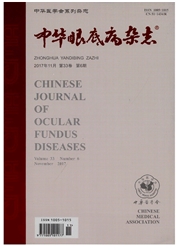

 中文摘要:
中文摘要:
目的建立视网膜前体细胞的培养方法。方法分离8~12周流产胎儿的视网膜神经上皮细胞,采用悬浮和贴壁两种方法分别进行培养和传代,取传代细胞用含5%胎牛血清的、无碱性成纤维细胞生长因子(bFGF)的培养基诱导分化培养14d,并采用免疫荧光法检测培养细胞诱导分化前后前体细胞和视网膜终末细胞标记物表达的改变。结果悬浮培养的细胞形成神经球并表达神经干细胞的标记物巢蛋白nestin,但无法成功传代扩增;贴壁培养的细胞可连续传代并表达nestin,传代细胞诱导分化后表达视网膜终末细胞的标记物胶质原纤维酸性蛋白(GFAP)、β微管蛋白(β-tubulin)和恢复蛋白recoverin。结论从8~12周的人胚胎视网膜神经上皮分离培养的视网膜前体细胞具有体外扩增和多分化潜能。
 英文摘要:
英文摘要:
Objective To establish a culture method for human fetal retinal progenitor cells (RPC) in vitro. Methods Retinal neuroepithelium of 8-12-week human fetal were isolated and cultured in suspension and adherent methods. The passage cells were cultured and differentiated for 14 days with 5% fetal bovine serum without basic fibroblast growth factor (bFGF). The expressions of RPC and retinal final cells markers before and after the differentiation were detected by immunohistochemical analysis. Results The isolated cells cultured in suspension method congregated as the neurospheres and expressed the neuroectodermal marker nestin, but failed in passage and expansion ; while the expression of nestin and serial passage were found in the cells cultured in adherent way. The differentiated passage cells expressed retinal final cells markers including glial fibrillary acid protein, β-tubulin and recoverin. Conclusions RPC derived from human fetal neural retina at the 8th-12th week of gestation are capable of expansion and multipotentiality.
 同期刊论文项目
同期刊论文项目
 同项目期刊论文
同项目期刊论文
 期刊信息
期刊信息
